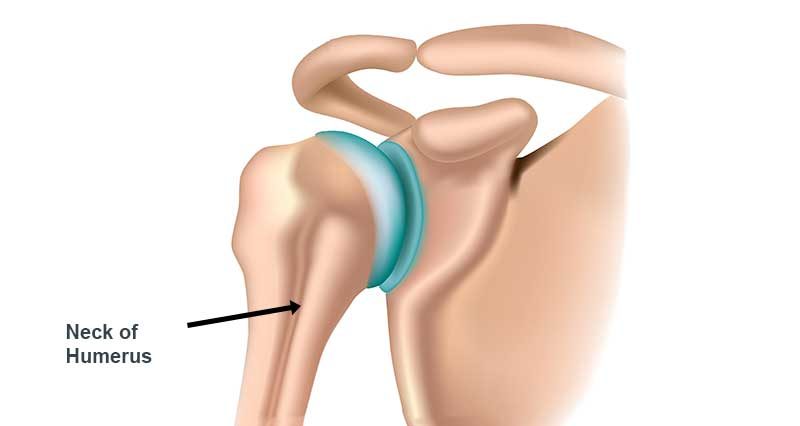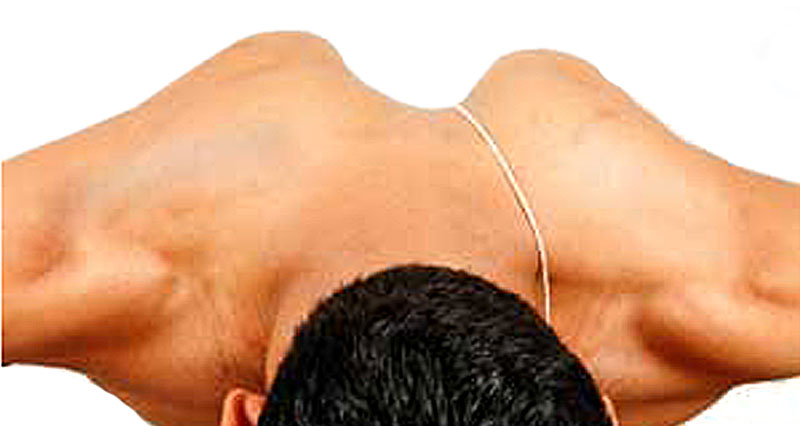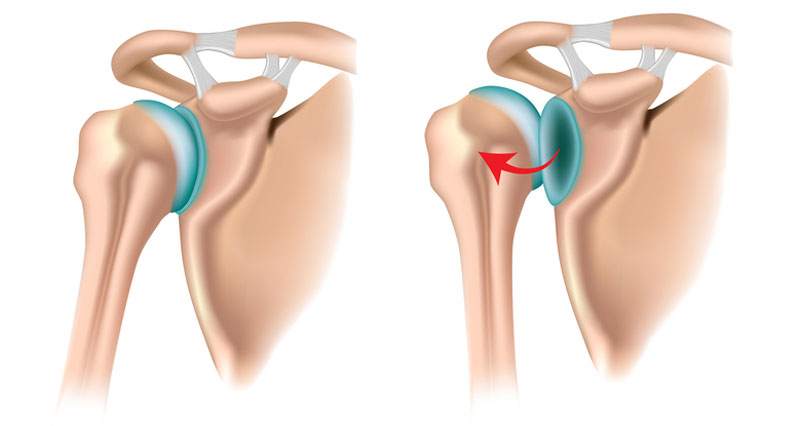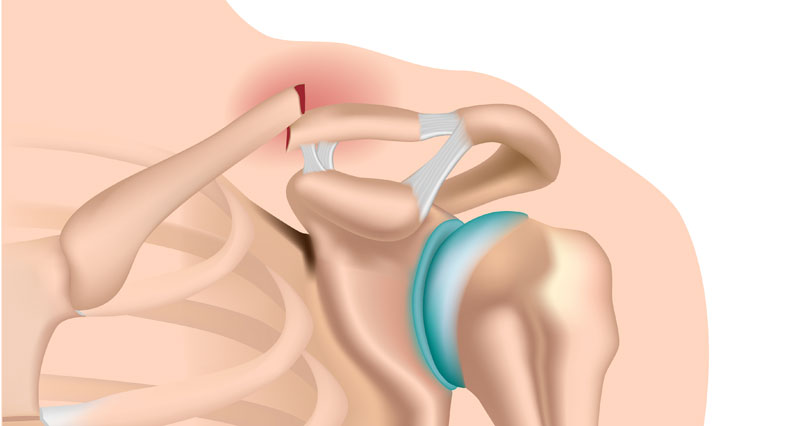A fracture of the neck of the humerus is a break near the top of the bone at the shoulder joint. A common cause is falling onto an outstretched hand, or a direct impact to the shoulder. Young adults, adolescents, and the elderly are more likely to suffer this injury.
Anatomy
The Humerus is the bone at the top of the arm which fits into the glenoid or socket of the shoulder to form the glenohumeral joint. The neck of the humerus is at the top of the bone. A fracture is a break in the bone.
Fractures with more than two fragments, those displaced more than 1 cm or associated with shoulder dislocation would most likely require an operation to assess the damage further. A fracture that is only displaced a little may be treated conservatively, i.e. without surgery. Impacted fractures heal quickly and are supported in a broad arm sling. Displaced fractures are best treated with a collar and cuff which will allow gravity to correct any misalignment/angulation.
Anatomical or Surgical humerus neck fracture
This type of fracture occurs in different parts of the humerus neck, typically classified into two main types:
- Anatomical Neck Fracture: This occurs just below the head of the humerus. It is less common but can be more serious because it may affect the blood supply to the head of the humerus, leading to complications such as avascular necrosis (death of bone tissue due to a lack of blood supply).
- Surgical Neck Fracture: This occurs just below the anatomical neck, at a narrower part of the bone. It is more common, especially in elderly patients with osteoporosis, and often results from a fall on an outstretched hand or direct trauma to the shoulder.
Symptoms
- Pain: Severe pain in the shoulder and upper arm, especially when moving the arm.
- Swelling and Bruising: Around the shoulder and upper arm.
- Deformity: The shoulder may appear deformed or out of place.
- Limited Mobility: Difficulty or inability to move the shoulder and arm.
- Numbness or Tingling: Possible if nerves are affected.
Diagnosis
- Physical Examination: To assess pain, swelling, and range of motion.
- Imaging Studies: X-rays are commonly used to visualize the fracture. In some cases, a CT scan or MRI might be necessary for a detailed view, especially if the fracture is complex or involves joint surfaces.
Treatment
- Non-surgical Treatment:
- Immobilization: Using a sling or shoulder immobilizer to keep the arm still and allow the bone to heal.
- Pain Management: Medications to control pain.
- Physical Therapy: Once the bone begins to heal, physical therapy helps restore range of motion, strength, and function.
- Surgical Treatment:
- Open Reduction and Internal Fixation (ORIF): Surgical procedure to realign the bone fragments and secure them with plates, screws, or rods.
- Hemiarthroplasty or Shoulder Replacement: In severe cases where the bone is shattered or the blood supply is compromised, partial or total shoulder replacement may be necessary.
Treatment depends on the type and severity of the fracture, as well as the patient’s age, health, and activity level. For the first two weeks, the arm is kept in a sling underneath clothes for additional protection. After two weeks pendular exercises of the shoulder joint may begin. From four weeks a collar and cuff can be worn outside clothes and then gradually removed in stages over the next two weeks as the arm progresses.
Recovery
- Healing Time: Typically ranges from several weeks to a few months, depending on the severity of the fracture and the patient’s overall health.
- Rehabilitation: Critical for regaining strength and mobility. May involve exercises to improve flexibility, strength, and coordination.
- Follow-up: Regular check-ups with the healthcare provider to monitor healing and progress.
Complications
- Avascular Necrosis: Risk if the blood supply to the humeral head is disrupted.
- Nerve or Blood Vessel Damage: Possible during the injury or surgical treatment.
- Stiffness and Reduced Range of Motion: Common but can often be improved with physical therapy.
- Malunion or Nonunion: Improper healing of the bone, which may require additional treatment or surgery.
Prevention
- Bone Health: Maintaining good bone density through diet, supplements, and weight-bearing exercises to prevent osteoporosis.
- Fall Prevention: Especially in the elderly, to reduce the risk of fractures.
For specific medical advice, diagnosis, or treatment, consulting with a healthcare professional is essential.



